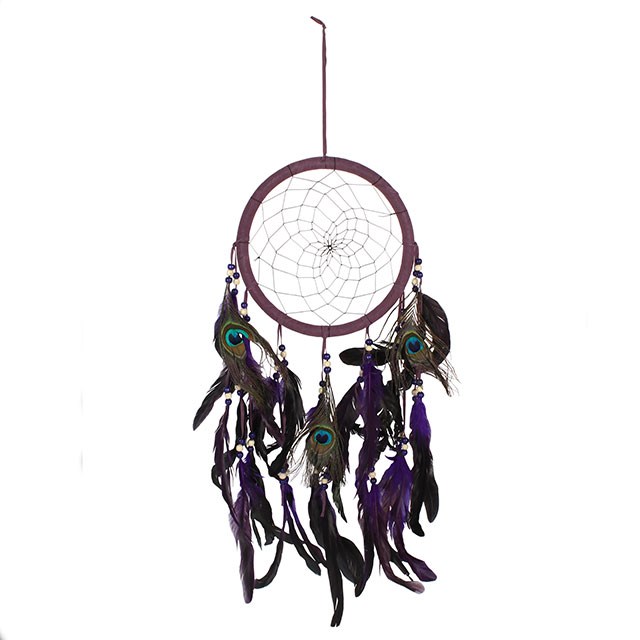History of the DreamCatcher.
Traditionally, dream catchers made by the Native Americans were only a few inches in diameter and would be finished with a feather (or more) hanging from the webbing and wrapping the frame in leather would be another common finishing touch. Very similar to the ‘Tiny’ range I have (1” diameter). Now days we have the modern version readily available in the stores but the old traditions are still very evident within the designs of these.
Native Americans believe the dreams that humans have while they sleep, are sent by sacred spirits as messages. According to their legend, in the center of the Dream Catcher there is a hole. Good dreams are permitted to reach the sleeper through this hole in the web and then floating down the feathers. As for the bad dreams, the web traps them and they disappear at dawn with the first light of the morning sun. It is said that when you have had a good night’s sleep, you will remember when the spirit has spoken with you.
The Dream Catcher represents several meanings. All of the decorations and materials used to decorate them, all have a special meaning. A single bead or ‘spirit feather’ in the middle may represent the spider that is on the web. Scattered beads throughout the web may represent good dreams that may have been caught throughout the night. A feather represents a symbol of breath or air which is attached so it hangs from the center of the ring. It is essential for life. A baby watching the air playing with the feather on her cradleboard was entertained while also being given a lesson on the importance of good air. This lesson comes forward in the way that the feather of the Owl is kept for wisdom (a woman's feather); & the Eagle feather is kept for courage (a man's feather). This is not to say that the use of each is restricted by gender; but that to use the feather each is aware of the gender properties she/he is invoking. (Indian people, in general, are very specific about gender roles and identity.)
Colours used also have a meaning.
Green – Representing Mother Earth and of healing. She is recognised as the one who feeds clothes and protects us from the other elements. She provides all that we need in order to live on this earth.
White – Purity, angelic knowledge and wisdom on how to use that knowledge in a positive way.
Red – The colour of passion, (and not just in the bedroom) but in all things. It represents anything you are passionate about. It’s the colour of honesty, hard work, family, integrity and of course love.
Blue – Representing the sky, air element. Representing all that lives in the sky; Grandfather sun, grandmother moon, Star nation and creation.
Yellow – when you have yellow placed in the east direction on the dream catcher, it represents the sun rising each day, therefore representing new beginnings.
Orange – This is the colour of wisdom and great when you are studying or teaching others as it helps you to focus.
Purple – This is a very popular colour for many reasons. It is the colour of inner self and the introspection of where the creator lives, within us all. It is also considered a very spiritual colour.
Of course, now a-days people tend to choose dream catchers to match their home colour schemes, but it’s worth keeping note of the traditional reasons certain colours were used. Throughout all of history, almost every culture and person has placed important significance on the true meaning of their dreams. Today, our dreams are just as powerful a force in many people's lives, as they were back with all of our Ancestors. Mainly, because of the meanings that are discovered in them. Regardless if your dreams are good or bad, they can confuse, inspire, or upset the dreamer.
Incorporating four gemstones into the Dream catcher was used to represent the four elements of life. Earth, Water, Fire and Air, all the things necessary to sustain life. Nature represents the spiritual inspiration in each. May you have a happy, dreamful life with your dream catcher and good Karma.
DID YOU KNOW?
Within the Ojibwe Tribe, dreams, or visions in the night, were so vital that children were not given a name until a “namer” (an individual designated to name the child) after the individual had a dream about what name should be given to the child. This “namer” may have also given the child a charm that was woven in the design to resemble the web of a spider so as to protect the infant’s dreams. This, along with the remaining child’s toys, such as bells, shells and pouches made of leather, this “dream catcher” was hung on the child’s cradleboard by the hoop. Larger ones would be hung up so that everybody could enjoy a restful night.
It is NEVER too late to choose your dream catcher.
